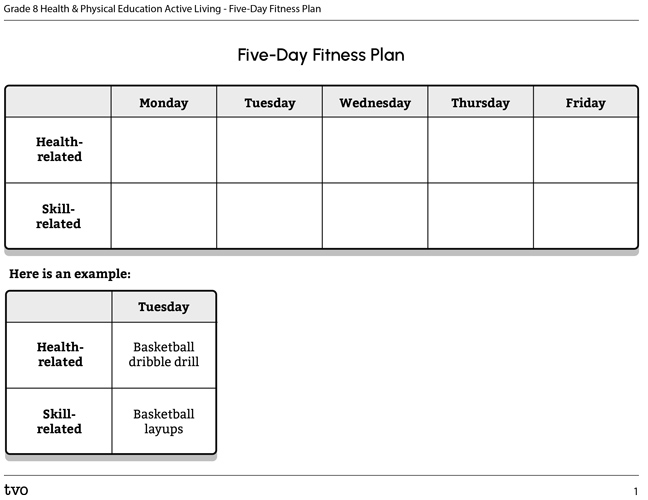Minds On
Compare and contrast
Explore the following two sets of terms.
| Set A | Set B |
|---|---|

|

|
Consider the following:
In ‘Set A:’
- what do you notice about the terms?
- do they have anything in common?
- what is similar about them?
In ‘Set B:’
- do the terms have anything in common?
- what is similar about them?
Pause and Reflect
Pause and reflect
What differences do you notice about the terms in ‘Set A’ compared to ‘Set B?’ What title would you give to each set of terms?
Record your ideas using a method of your choice.
Action
Health-related and skill-related
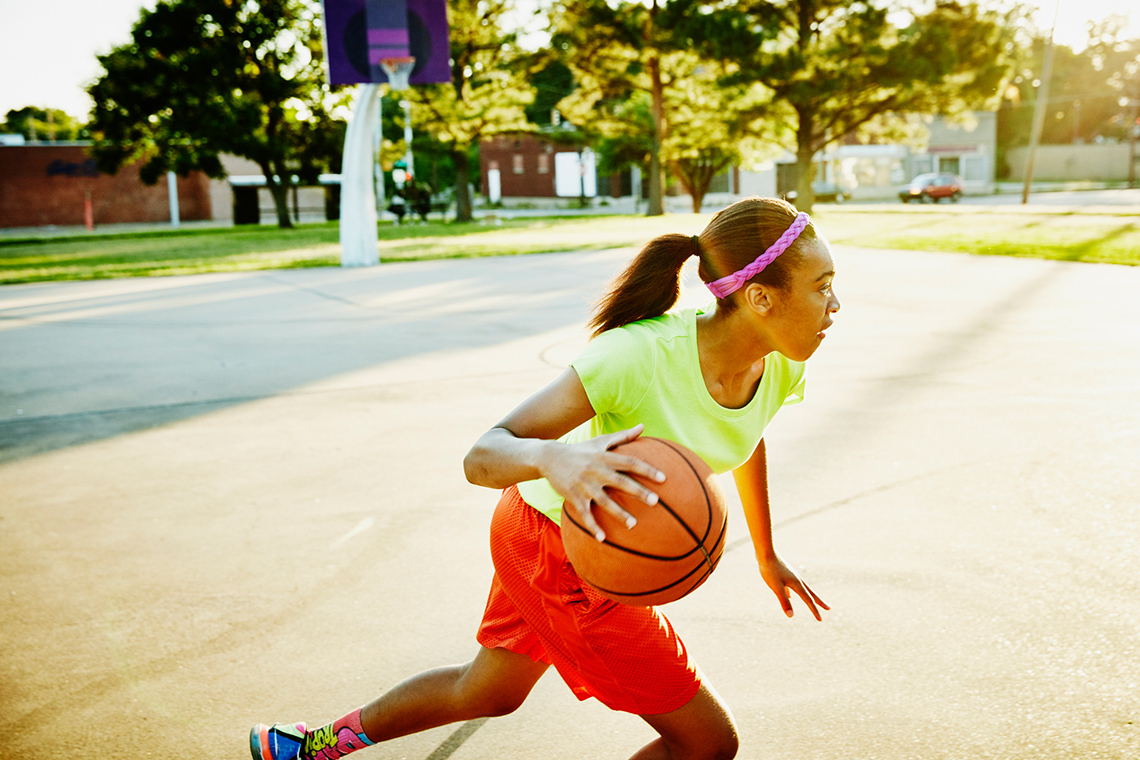
There are a variety of aspects that contribute to our personal fitness. We can divide them into two categories:
-
Health-related
-
Skill-related
The terms introduced in the Minds On refer to the components of physical fitness. Some are health-related components which refer to your day-to-day activities that focus on health. Health-related components of fitness contribute to your overall health and well-being. When we think of fitness we usually think of health-related components.
There are also skill-related components of physical fitness. These components refer to your ability or how well you perform physical tasks. Skill-related components of fitness help improve the quality of your movements during activity.
Student Tips
What do they all mean?
Before we continue, it will be important to familiarize ourselves with the terms we explored in the Minds On section.
Press each term to reveal its definition. You can refer to this list throughout the learning activity.
Your body’s ability to intake and distribute oxygen
The muscle’s ability to contract against resistance
The muscle’s ability to work for long periods of time
The body’s range of motion
The body’s ability to maintain equilibrium when moving or staying still
The body’s ability to change direction
Transferring strength into an action
How quickly we respond to an outside stimulus
Length of time to complete a movement
The body’s ability to perform motor tasks smoothly and accurately
Health and skill scramble
Let’s think about those terms from the Minds On section. Some of the terms are health-related, and some are skill-related.
For each term, decide if it is health-related or skill-related. Then, press the ‘Check Answer’ button to reveal the answer.
Pause and Reflect
Pause and reflect
How could you include an equal balance of both health-related and skill-related components in a personal fitness plan?
Press the ‘Hint’ button to reveal a hint.
If a person was competing in a 10 km race, they may create a fitness plan that includes muscular strength exercises, muscular endurance exercises, speed exercises, and coordination exercises.
Which types of activities are a better way to increase overall physical fitness? What would happen if we used a combination of both?
When you’re ready, press the ‘Answer’ button to reveal a possible answer.
Most often health-related and skill-related fitness work together to support physical well-being. If we focus on skill-related activities only, we will only experience a slight improvement in our overall fitness.
What’s what?

What do you think are some of the most effective activities for each of the components of physical fitness?
Press the ‘Hint’ button to reveal an example.
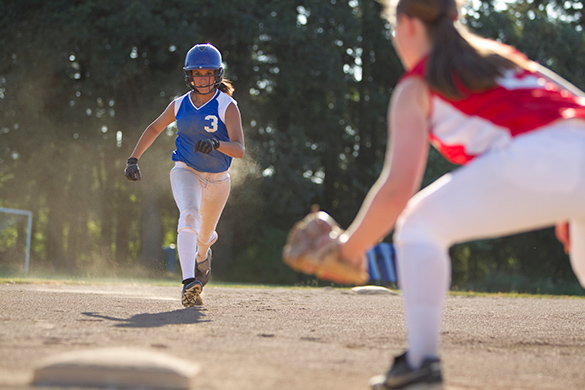
What other activities are linked to specific health-related and skill-related components?
Match each skill-related component to the activity you can do to improve it.
Nice work! Now, let’s match health-related components.
Match each health-related component to the activity you can do to improve it.
Pause and Reflect
Pause and reflect
Answer the following questions using a method of your choice.
- How could training principles - such as workout frequency, intensity, and timing - improve your health-related fitness? What are some of the skill-related activities that interest you? Which ones are already a part of your routine?
- What are some of the health-related activities that interest you? Which ones are already a part of your routine?
Your turn
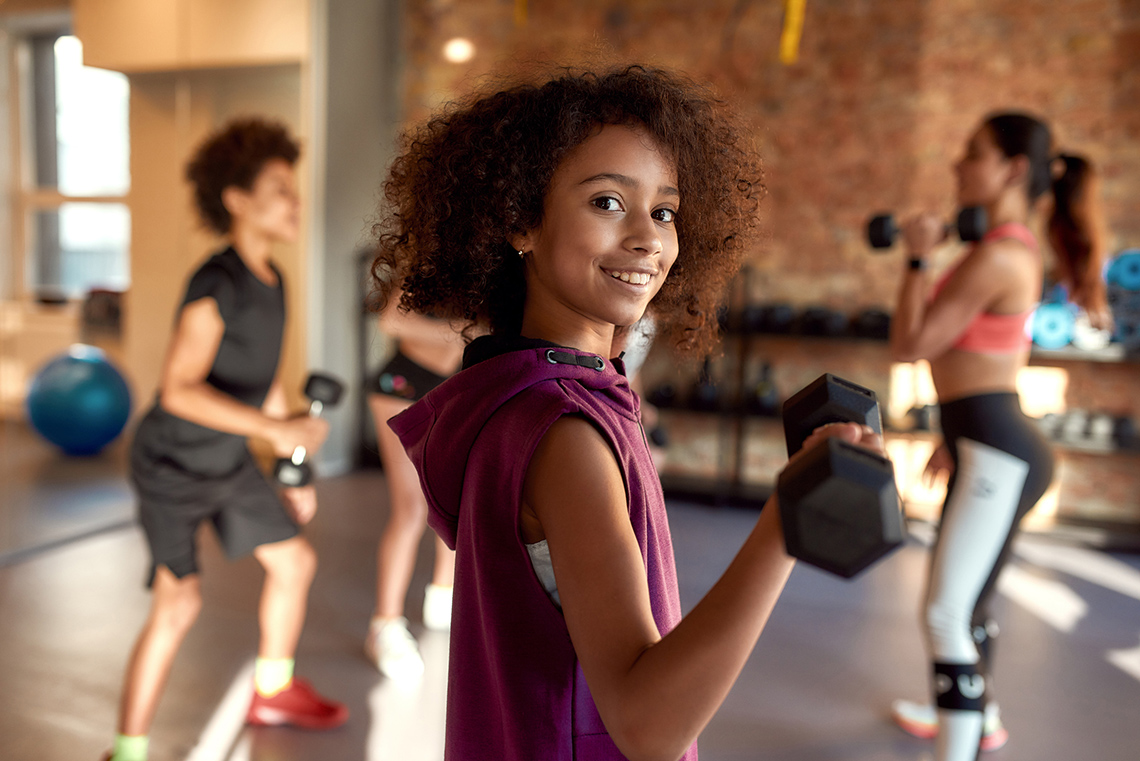
Choose one health-related activity and one-skill related activity that you would like to perform for up to 20 minutes in total.
Consider your safety before you begin. Be sure to do a short warm up of two to three stretches to get your heart rate up and your body ready for the activities.
Safety
Before you begin, consider these safety precautions:
Pay close attention to how your body is feeling while you are participating in the activities and then again when you have completed the activities.
When you’re done, be sure to complete two to three stretches to bring your heart rate back down.
Pause and Reflect
Pause and reflect
Think about the activities you completed for your 20-minute workout. Why were these the activities that you chose?
Record your thoughts in a method of your choice.
Canadian physical activity guidelines
Explore the following guide from the Canadian Physical Activity Guidelines for Youth, created by the YMCA. This document includes guidelines about physical activity for youth between the ages of 12 to 17 years.
| This document is for Youth 12–17 years. There is a subtitle labelled “Guidelines” and the following points: |
| For health benefits, youth aged 12-17 years should accumulate at least 60 minutes of moderate- to vigorous-intensity physical activity daily. This should include: Vigorous-intensity activities at least 3 days per week. Activities that strengthen muscle and bone at least 3 days per week. More daily physical activity provides greater health benefits. |
| Moderate-intensity physical activities will cause teens to sweat a little and to breathe harder. Activities like: Skating, Bike riding . Vigorous-intensity physical activities will cause teens to sweat and be ‘out of breath’. Activities like: Running, Rollerblading. |
| Being active for at least 60 minutes daily can help teens: Improve their health, Do better in school, Improve their fitness, Grow stronger, Have fun playing with friends, Feel happier, Maintain a healthy body weight, Improve their self-confidence, Learn new skills. |
| Parents and caregivers can help to plan their teen’s daily activity. Teens can: Walk, bike, rollerblade or skateboard to school. Go to a gym on the weekend. Do a fitness class after school. Get the neighbours together for a game of pick-up basketball, or hockey after dinner. Play a sport such as basketball, hockey, soccer, martial arts, swimming, tennis, golf, skiing, snowboarding. |
| Now is the time. 60 minutes a day can make a difference. |
Press the ‘Activity’ button to access the Canadian Physical Activity Guidelines for Youth.
Pause and Reflect
Pause and reflect
What are three to five important pieces of information that youth should know from this guide when creating a workout plan for themselves?
Record your thoughts in a method of your choice.
Five-day fitness plan
What could a 7-day fitness plan look like for a youth who is striving to be more active and combining health-related and skill-related components?
Based on information in this learning activity, explore the following two five-day fitness plans. Which of these would be a more healthy, balanced plan?
| Monday | Tuesday | Wednesday | Thursday | Friday |
|---|---|---|---|---|
| 30 minutes of jogging | 45 minutes of weightlifting | 5 minutes of basketball dribbling | 10 minutes of rowing | 20 minutes of stretches |
| 60 minutes of cycling | 45 minutes of jogging | 5 minutes of sprints | 10 minutes of cycling | 20 minutes of sprints |
| Monday | Tuesday | Wednesday | Thursday | Friday |
|---|---|---|---|---|
| 20 minutes of yoga | 10 minutes of soccer shots | 20-minute of speed walk | 15 minutes of sprints | 15 minutes of soccer dribbling |
| 15 minutes of sprints | 40 minutes of jogging | 15 minutes of bodyweight exercises | 20 minutes of weightlifting | 15 minutes of cycling |
Pause and Reflect
Pause and reflect
Which of these two five-day plans are more balanced and will lead to better health for the planner? Why?
Record your thoughts in a method of your choice.
When you’re ready, press the ‘Answer’ button to reveal an answer to this question.
Plan #2 – there is more balance between the activities (health-related AND skill-related), and it is more focused on skills related to soccer, which is clearly their plan.
Consolidation
Put it all together
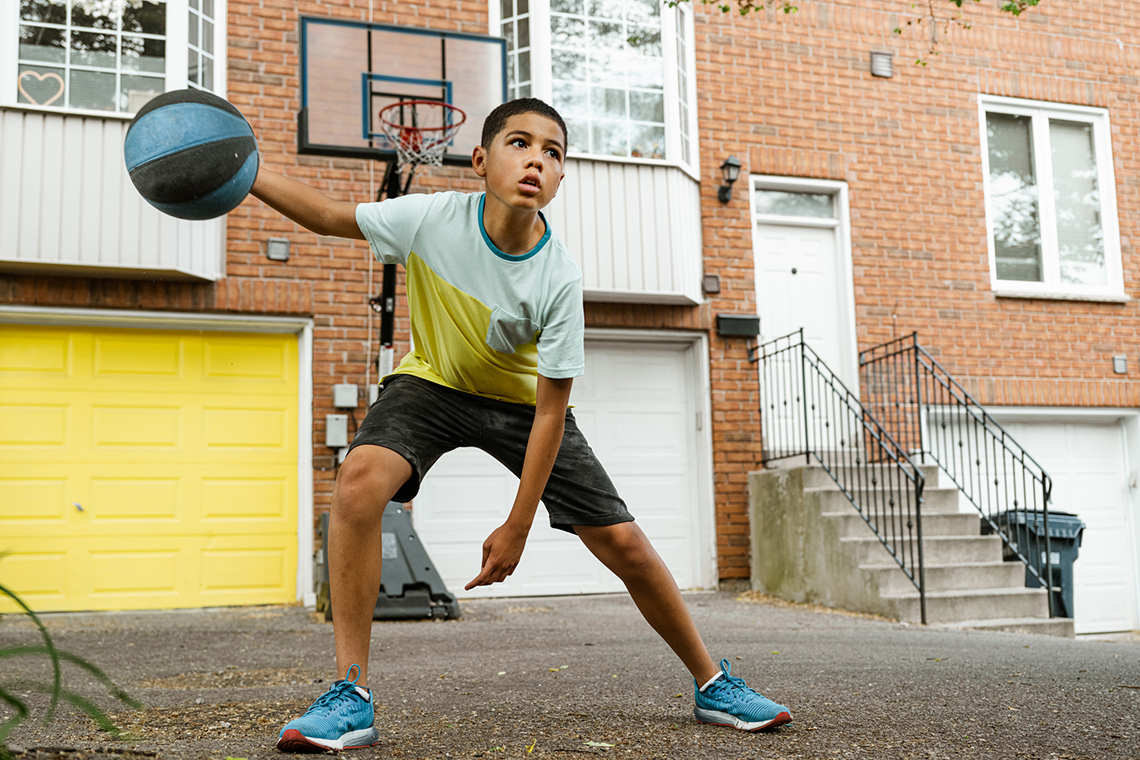
It’s your turn to show what you know about personal fitness. Create a five-day fitness program that combines both health-related and skill-related components. Use the following Tuesday example, and example plan #2 in the Action section to help get your thinking started.
You can use the following fillable and printable Five-Day Fitness Plan template to develop your plan. This document includes an example to get you started. You may also want to refer to the “Fitness Plan 2” in the Action section to get your thinking started.
You can also complete your five-day fitness plan using another method of your choice.
| Monday | Tuesday | Wednesday | Thursday | Friday |
|---|---|---|---|---|
|
Health-related |
||||
|
Skill-related |
Here is an example:
| Tuesday | |
|---|---|
|
Health-related |
Basketball dribble drill |
|
Skill-related |
Basketball layups |
Pause and Reflect
Pause and reflect
How do you think implementing a combination of the two components into our daily physical activity can effectively support a healthy lifestyle?
Reflection
As you read the following descriptions, select the one that best describes your current understanding of the learning in this activity. Press the corresponding button once you have made your choice.
I feel…
Now, expand on your ideas by recording your thoughts using a voice recorder, speech-to-text, or writing tool.
When you review your notes on this learning activity later, reflect on whether you would select a different description based on your further review of the material in this learning activity.
Press ‘Discover More’ to extend your skills.
Discover MoreAttempt to complete your five-day planner and record your observations about your choices before and after you have tested your choices. Is there anything that you would like to change? Why or why not?
